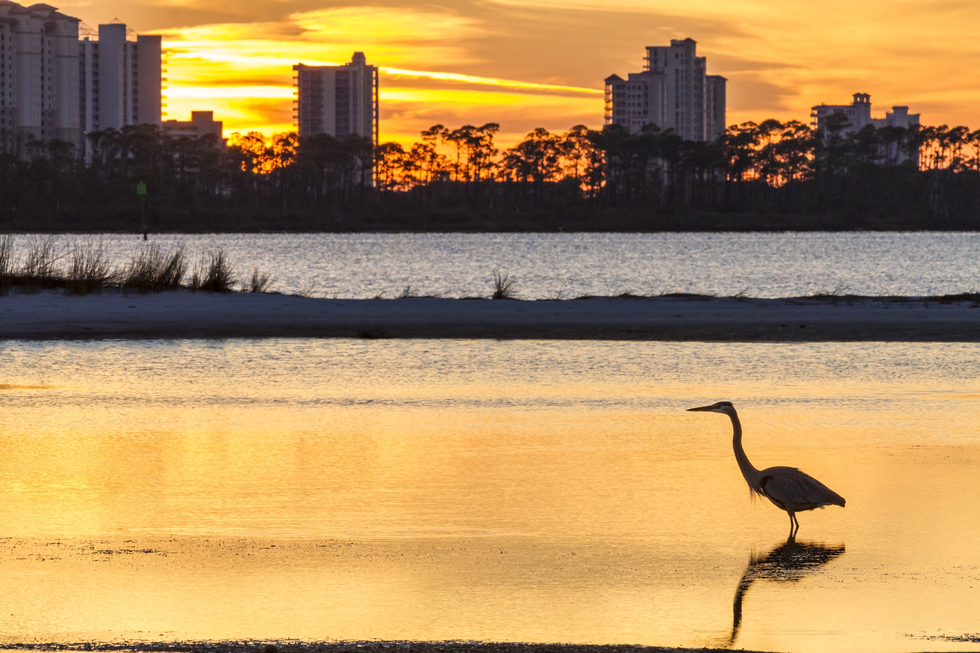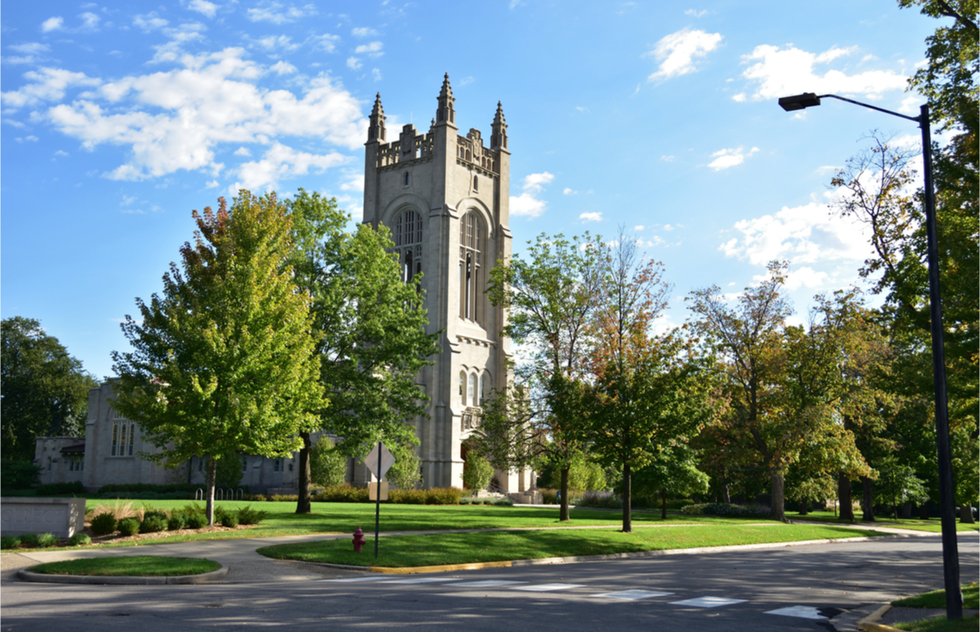Instead of Vacation, Relocation: Five Smaller Cities in the USA to Move To
By Stephen BrewerFor many, the definition of travel changed in 2020. Forced to work from home, people realized that the pandemic provided them a new way of seeing the world—by relocating. They could, if they wished, settle in for a short term to try out a place they thought they might want to live, or make the move for the long haul without losing their jobs.
Where to go becomes the question, and we’re here to help with a quick look at life in some laid-back destinations for relocation around the United States. All are close to nature, affordable, and have a small-town vibe.
Pictured above: a home in Bend, Oregon
The great outdoors is the main draw in the largest town in Central Oregon's high desert country, population 100,000. Right in town are 70 parks and 65 miles of recreational trails, and just a short drive away in the Cascade mountains are ski slopes, pristine lakes, whitewater streams, and huge swaths of forest land crisscrossed with hiking trails.
Weather: Year-round weather is sunny and dry—not too hot, not too cold is the norm. Unlike Portland and other rainy Pacific Northwest neighbors, Bend gets only 12 inches of rain a year, along with 24 inches of snow. High temps average 82°F in the summer, 48°F in the winter, and sunny or mostly sunny skies prevail for 263 days a year.
Money Matters: Median home value is $500,000, according to Zillow estimates, and average rent for a one-bedroom is $1,500 per month, higher than many places in the U.S. but well below housing costs in many larger metropolitan areas. Sunriver Resort, Black Butte Ranch, and Eagles Crest Resort are nearby planned communities where you can live as if you're on a permanent vacation amid mountain scenery, hiking and ski trails, golf courses, and lots of forest land.
Transportation and Location: Bend is decidedly car-oriented and public transport is limited, but there are more than 160 miles of bike trails. Direct flights to and from Portland, as well as San Francisco, Seattle, and a few other cities, operate out of the airport in Redmond, 17 miles north. Portland is 175 miles northwest (3 hours by car). Newberry National Volcanic Monument, the ski slopes on Mount Bachelor, and Cascades Lakes National Scenic Byway are among the many, many nearby places to enjoy the great outdoors while social distancing.
Pros: heaven for outdoor enthusiasts; friendly, low-key vibe more like a resort than a city; the most dog-friendly city in the U.S., according to Dogster
Cons: fairly isolated in the Cascade Mountains; with a population that's 94% white, this is not a cultural melting pot—in fact, some joke that being diverse in Bend means having a different color Subaru
For more info: Go to visitcentraloregon.com and visitbend.com.
A picture-perfect New England village with church steeples and streets of fine 19th-century homes and gracious inns, Camden is known as the place "where the mountains meet the sea." From outlooks atop Mount Battie, views extend for miles across rolling green countryside, Penobscot Bay, craggy islets, the Curtis Island lighthouse, and white clapboard houses surrounding a harbor filled with sailboats and fishing trawlers. Adjacent Rockport, an artist's colony, is similarly picturesque.
Weather: Harsh winters, with average temps in the 30s from December through March, give way to pleasant summers, when average temperatures are in the 70s and 80s. The year-round population of 5,300 triples in the summer, when Camden is a popular vacation spot and a stopover for yachters and leisure sailors.
Money Matters: Median home value is $380,000, and average rent for a one-bedroom apartment is about $930 per month—though rental rates soar in the summer, when many properties are available only for short-term rentals.
Transportation and Location: A car is a necessity and puts Camden within easy reach of Rockland (Maine's lobster capital), Belfast, and other charming towns in Mid-Coast Maine. Portland, with the nearest large airport and a noted food scene, is 80 miles south, while Boston is about 185 miles away.
Boating and sailing are hugely popular, while Camden Hills State Park is laced with trails and Camden Snow Bowl on Ragged Mountain has ski runs and hosts the annual U.S. National Toboggan Championships. On the cultural front, Camden Opera House presents concerts and other events year round, while Rockport stages the popular summertime Bay Chamber Concerts.
Pros: combines New England village life, craggy coastal scenery, and woodsy backcountry; when small-town life closes in, several charming towns and Portland are within easy reach
Cons: long winters, tourist-clogged summers
For more info: Go to camdenrockland.com.
This small, easygoing city in the Florida Panhandle has more in common with the Deep South than Miami Beach. Powdery white Gulf Beaches are the draw, and they're strung out along a 52-mile-long stretch of the Gulf Islands National Seashore. Beach experiences include the lively Boardwalk and nearby Santa Rosa; seafood resaturants and bars are easy to find as well. The National Naval Aviation Museum is among a small roster of engaging cultural stops.
Weather: Mild winters see temperatures in the 60s and 70s, with lows rarely below the 40s, while summers are hot and muggy, with average temperatures in the high 80s. Hurricanes are the main meteorological concern.
Money Matters: With 53,000 residents, Pensacola is much less densely populated than cities in southern Florida, and, as in many other parts of the state, the cost of living is relatively low, with housing costs 25% below the national average. Median home values are $250,000 and median rents are $800.
Transportation and Location: Pensacola International Airport handles nonstop flights to and from Atlanta, Chicago, Miami, and other cities. Pensacola is much closer to New Orleans (202 miles west) than to Miami (675 miles southeast). Road trips closer to home provide a close-up look at local flora and fauna in Fort Pickens State Park Aquatic Preserve, Tarkiln Bayou Preserve State Park, and Bayou Marcus Wetlands. The Blue Angels, stationed at the Naval Air Station, put on sky shows.
Pros: surrounded by miles of beautiful beaches; a laidback and affordable southern lifestyle fueled by shrimp and grits and other seafood favorites
Cons: kind of isolated, though big-city life is a 3-hour drive away in New Orleans; muggy summers and hurricane threats
For more info: Go to visitpensacola.com.
Weather: Average temps stay in the single digits from November through March, often dipping below 0. This is Minnesota, after all. But many outdoor enthusiasts enjoy the crisp sunny days and lingering snowpack, ideal for cross-country skiing. Summers are pleasant, with average highs in the low 80s, though they can be muggy.
Money Matters: Cost of living is lower than in many urban areas, and median home values are about $285,000, according to Zillow. The average monthly rent for a one-bedroom apartment is about $750.
Transporation and Location: Minneapolis-St. Paul International Airport and the many attractions of the Twin Cities are only 30 miles north.
Cons: those Minnesota winters
For more info: Go to northfield.org and visitnorthfield.com.
Weather: The sun makes an appearance about 300 days a year, and from December through March temperatures linger comfortably in the 60s and 70s. Come summer, though, daytime temps climb into the triple digits.
Money Matters: Zillow currently estimates the median home value in Peoria to be $336,000, and the average apartment rental is $1,300 per month. Peoria has many planned communities geared to a resortlike lifestyle; some are oriented to residents 55 and older, though many, such as Vistancia, aren't exclusively for seniors.
Transportation and Location: As in car-oriented Phoenix, public transit in Peoria is limited, though a fairly extensive network of bike lanes and bike-and-walking paths includes the scenic 10-mile-long New River Trail. Sky Harbor International Airport is only about 20 miles away, and Camelback Mountain, Papago Park, the Desert Botanical Garden, and other attractions in the aptly named Valley of the Sun are within easy reach—though traffic can be intense.
Pros: a sunny escape from harsher climes; plenty to do outdoors, especially for golfers and boaters; easygoing lifestyle
Cons: lots of suburban sprawl; scorching summers; not a cultural hotspot, though many Phoenix-area attractions are within easy reach
For more info: Go to visitpeoriaaz.com.
















